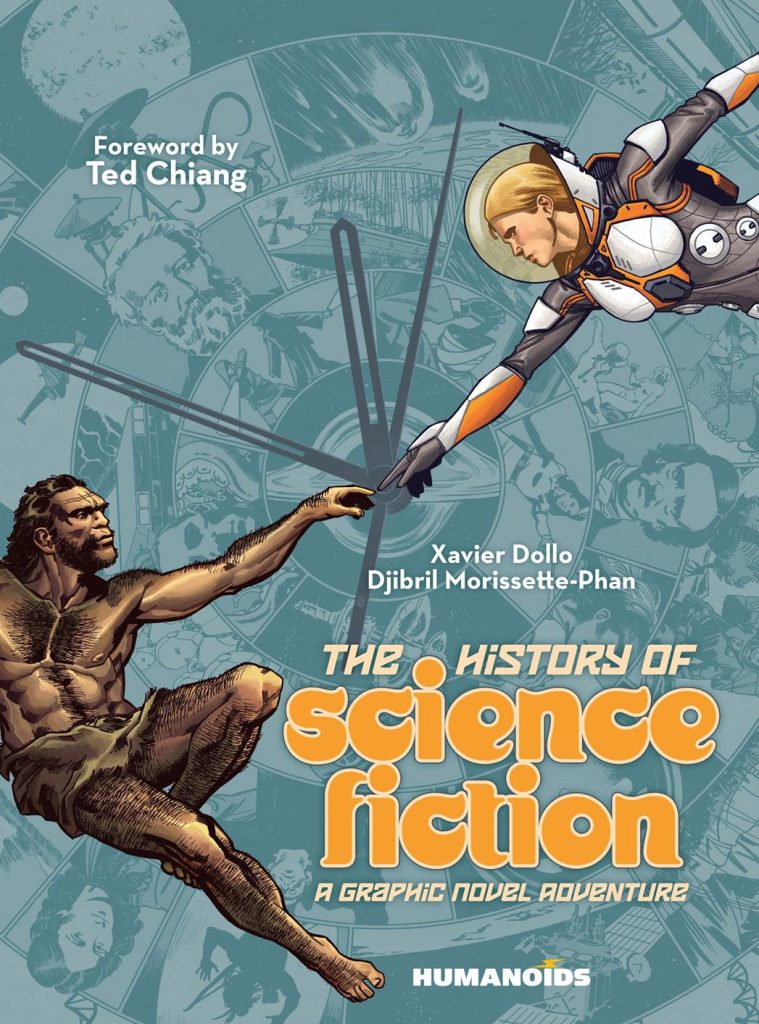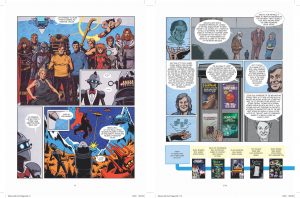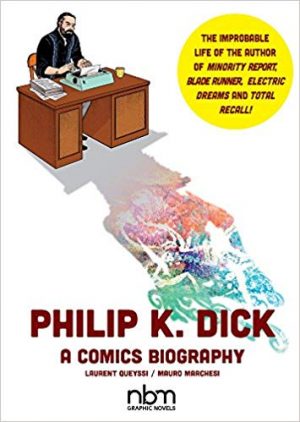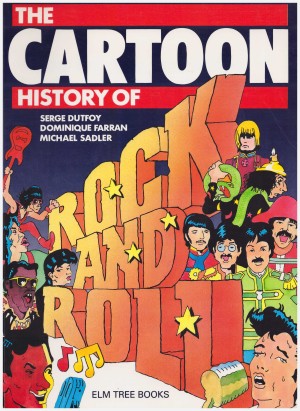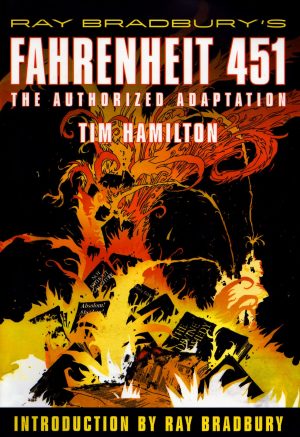Review by Ian Keogh
Attempting to tackle the history of a genre that’s spread beyond novels into films, TV shows and comics in just under two hundred illustrated pages is ambition on a grand scale, but Xavier Dollo and Djibril Morissette-Phan succeed. This is Dollo’s first graphic novel, but he’s an accomplished writer and lecturer, and begins with a broad introduction noting how science-fiction constantly inspires the future rather than predicts it. Thereafter he and Morissette-Phan collaborate on a broad sweep through a linear chronology beginning with Thomas More’s Utopia, and allowing the space for a page or two of significant works to be adapted along with consideration of their author. That stops when the narrative reaches what remains copyrighted, but Dollo doesn’t just provide a synopsis. He contextualises how writers and their works represented philosophical, political or social thought, discusses how themes such as rational thought long predominate, notes the visionary activities of authors beyond their writing and provides recommended reading.
Given the theme, it’s unsurprising that Phan’s illustrations are largely representational instead of panel to panel continuity, but his sheer versatility within that is immense. From olden times to the far flung future via celebrity likeness and assorted reproductions in a variety of styles, there’s nothing about Phan’s art that lets a reader down.
In order to avoid a repetitious format when advances occur in relatively quick succession, perhaps controversially, Dollo includes conceits such as imagined conversations between authors concerning how science fiction evolved from the mid-20th century. While the authors never actually spoke most of the words, Dollo’s dialogue is true to their beliefs and personalities and it’s a sophisticated and compact device to cover considerable progress. Among this group is Robert E. Heinlein and considering how patriarchal views expressed through his stories are now controversial, it’s a surprise to learn that he stood for election on a left-wing ticket, and his wife was a considerable early influence.
Because the topic is so extensive, Dollo restricts the text to charting the growth of novels and short stories, while running bottom of the page recommendations for significant films, TV shows or graphic novels. A few pages are little but text in explaining an author’s achievements, but Dollo always guides toward further reading, and he doesn’t avoid shortcomings, such as the lack of representation both among writers and in their stories. For a long, long time it was rare that any renowned author of science fiction was anything other than white and male.
An extensive index in small print enables readers whose knowledge of science fiction is vast to quibble with choices made regarding which secondary practitioners are absent. For a general reader with a passing knowledge of the genre, though, this will be a thorough grounding and a long journey of joyous exploration.
